The Perfect Fit: Your Guide to How a Women's Leather Jacket Should Really Fit



You've found a leather jacket with gorgeous leather and impeccable style, but wait. How does it feel? When it comes to leather jackets, fit isn't just about looking good; it's paramount for comfort, movement, and ensuring your investment piece lasts and looks better over time. A poorly fitting jacket, no matter how beautiful, will likely end up unworn in the back of your closet.
Navigating the world of leather jacket fits can be tricky. Should it be snug or relaxed? How long should the sleeves be? Does the fit change depending on the style, like a biker versus a bomber? This guide cuts through the confusion, offering expert insights into how each key area of a women's leather jacket should fit, helping you avoid common pitfalls and find that perfect second skin feel.
Why Fit Matters So Much
Unlike fabric jackets that might have more give, leather has structure. A good fit ensures:
- Comfort: You can move your arms freely without restriction.
- Flattering Silhouette: The jacket complements your body shape.
- Longevity: Proper fit prevents undue stress on seams and leather, helping the jacket mold to you correctly over time.
- Style Integrity: The intended look of the jacket (e.g., sharp biker vs. relaxed bomber) is maintained.
Let's break down the fit point by point.
1. Shoulders: The Foundation of Fit
This is arguably the most crucial fit point. If the shoulders don't fit, the rest of the jacket likely won't either, and it's the hardest part to tailor.
- The Rule: The shoulder seam should sit right at the edge of your shoulder bone, where your shoulder begins to curve down into your arm.
- Too Wide: If the seam droops down your upper arm, the jacket is too big. This creates a bulky, unflattering look and restricts movement differently.
- Too Narrow: If the seam sits up on top of your shoulder bone, the jacket is too small. It will feel tight across the upper back and shoulders, restricting arm movement forward.
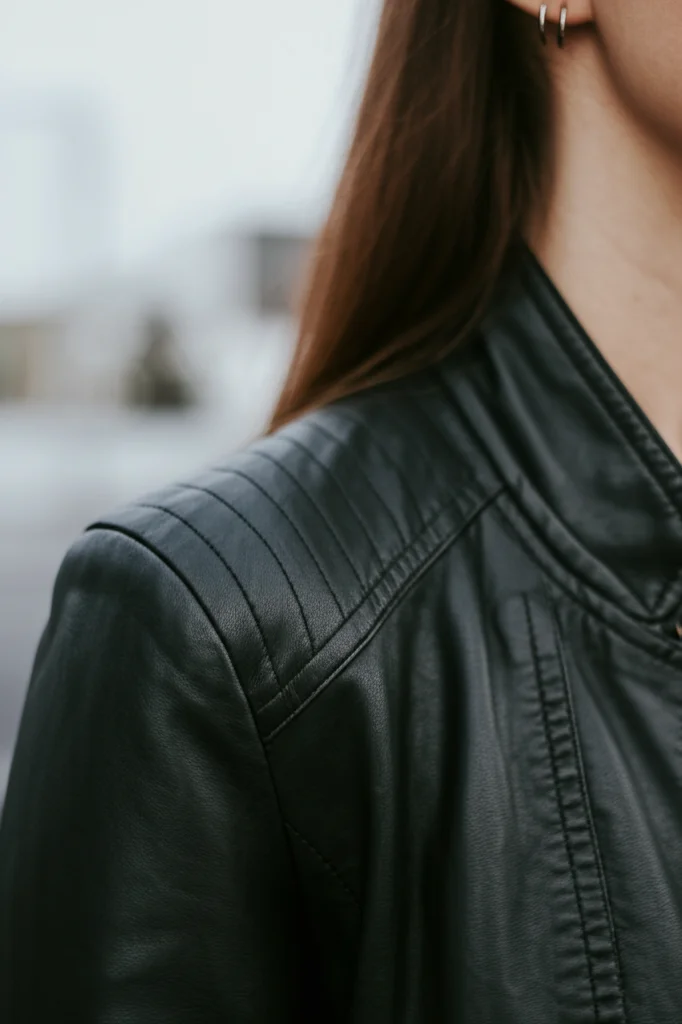
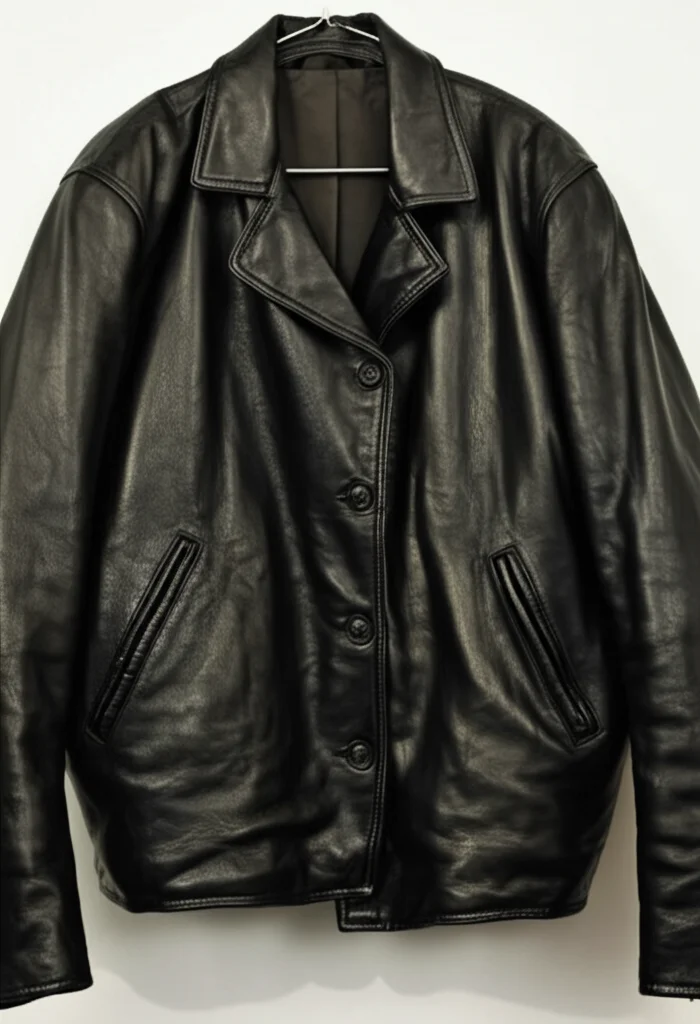
2. Chest and Torso: Snug But Not Straining
How the jacket fits across your chest and torso depends slightly on the style, but comfort is key.
- The Goal: You should be able to zip or button the jacket comfortably without it pulling tightly across your chest or back. There should be enough room to wear a light layer underneath (like a tee or thin sweater) but not so much room that it looks baggy when unzipped.
- Movement Test: Try crossing your arms in front of you. You should feel some resistance (it's leather, after all), but it shouldn't feel painfully tight across your back or like the seams are straining.
- Style Consideration: Fitted styles like racers or some bikers are meant to be close fitting. Looser styles like bombers or oversized blazers will naturally have more room.
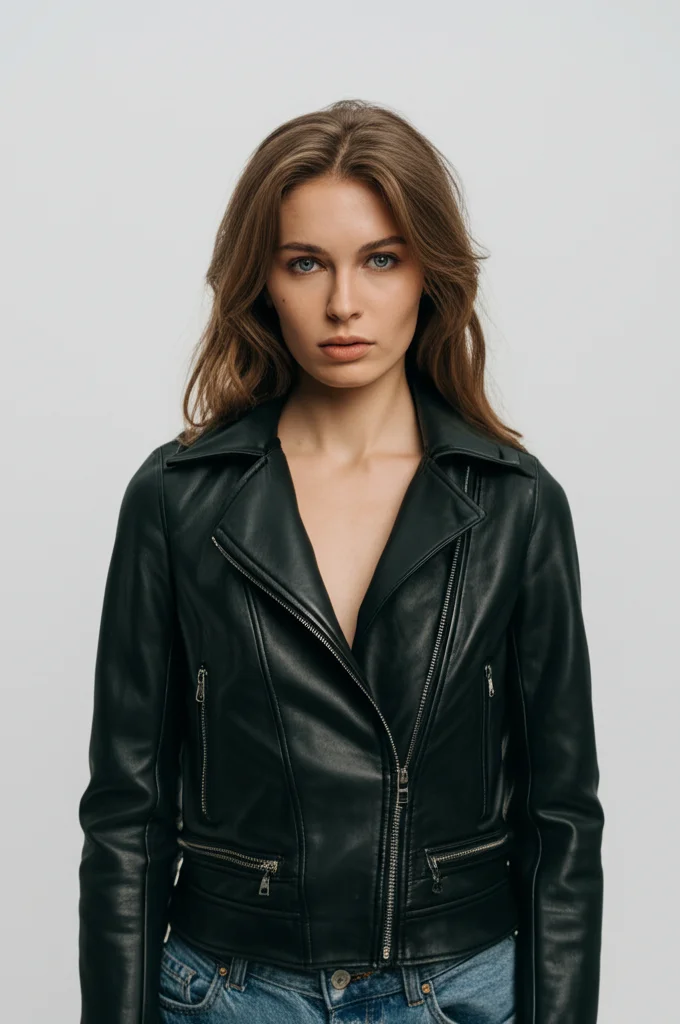
3. Waist: Defined or Relaxed?
The waist fit significantly impacts the overall silhouette and varies greatly by jacket type.
- Fitted Styles (e.g., Biker, some Blazers): These often have shaping through the waist or belts to create definition. The fit should follow your natural waistline without being constricting.
- Straighter Styles (e.g., Bomber, Racer, Field Jacket): These typically have a straighter, more relaxed fit through the waist. They shouldn't cling but should fall cleanly without excess fabric bunching.
- Length Matters: Consider where the hem hits. Cropped jackets emphasize the waist, while longer styles create a different line. Ensure the hem location works with your body proportions and typical outfits (e.g., high waisted jeans pair well with cropped styles).
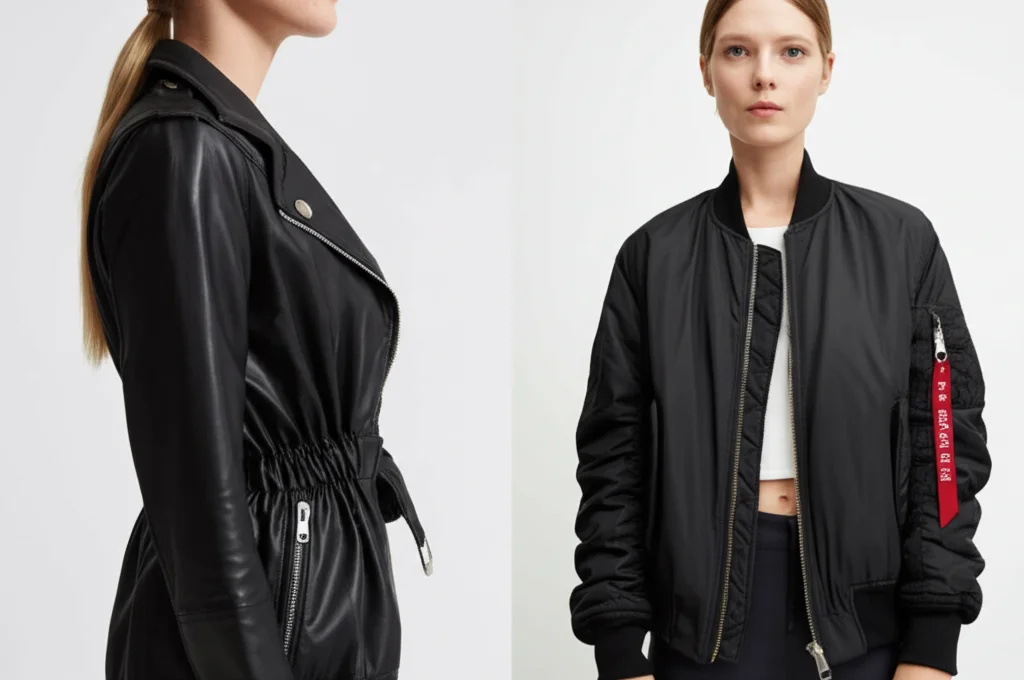
4. Sleeves: Length and Width
Sleeve fit is crucial for both comfort and aesthetics.
- Length: With your arms relaxed at your sides, the sleeves should end right around your wrist bone. This allows for comfortable movement and lets you show a hint of cuff or watch if desired. When you bend your arms, the sleeves shouldn't ride up excessively.
- Too Long: Sleeves bunching up over your hands look sloppy and can get in the way.
- Too Short: Sleeves ending significantly above the wrist look ill fitting and can feel restrictive.
- Width: Sleeves should be comfortable, allowing you to bend your elbows easily. They shouldn't be so tight that they cut off circulation or so wide that they look baggy and disproportionate to the jacket body (unless it's an intentionally oversized style).
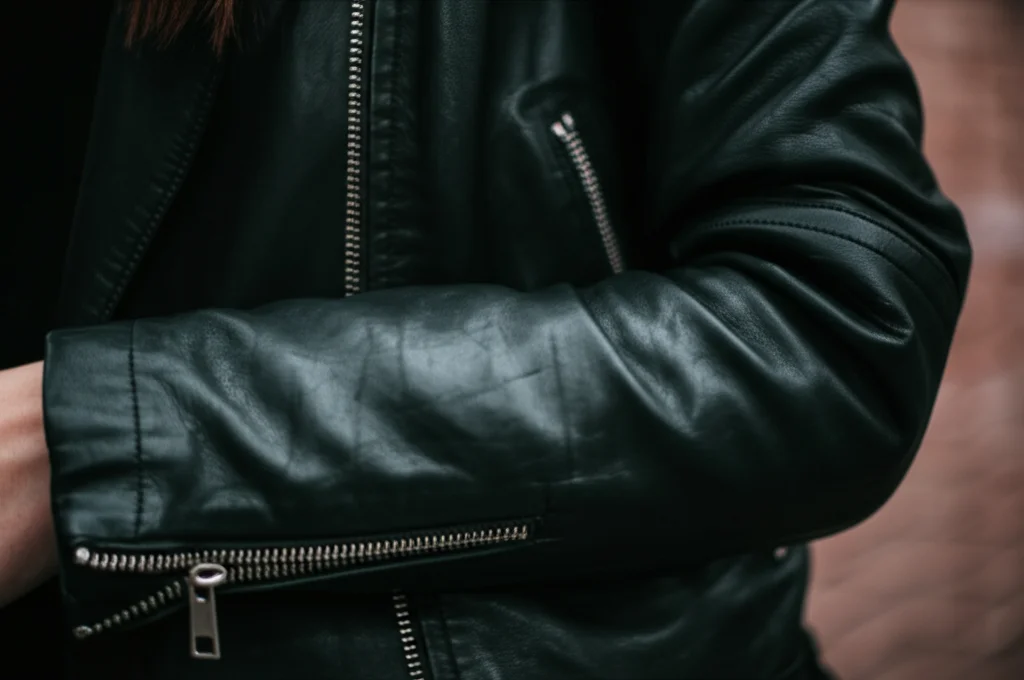
Final Considerations
- Try It On Properly: Wear layers similar to what you'd typically wear underneath the jacket when trying it on.
- Move Around: Don't just stand still in front of the mirror. Raise your arms, cross them, bend over. Simulate real life movements.
- Leather Stretches (Slightly): High quality leather will mold to your body and stretch slightly in high stress areas (like elbows) over time, but don't buy a jacket that's uncomfortably tight hoping it will stretch significantly. Major fit issues won't resolve themselves.
- Know the Style: Understand the intended fit of the specific type of leather jacket you're considering. A relaxed bomber shouldn't fit like a tailored blazer.
- Tailoring: While some minor alterations are possible (like sleeve shortening), major changes (especially shoulders) are difficult and expensive with leather. Aim to get the core fit right from the start.
Trust Your Comfort
Ultimately, the perfect fit is one where you feel confident and comfortable. Use these guidelines as a starting point, but trust your instincts. A well fitting leather jacket should feel like an extension of yourself, ready for years of adventures.
What are your biggest challenges when finding the right leather jacket fit? Share your experiences or questions in the comments below!
Subscribe to our Newsletter
Get the latest posts and updates delivered straight to your inbox.